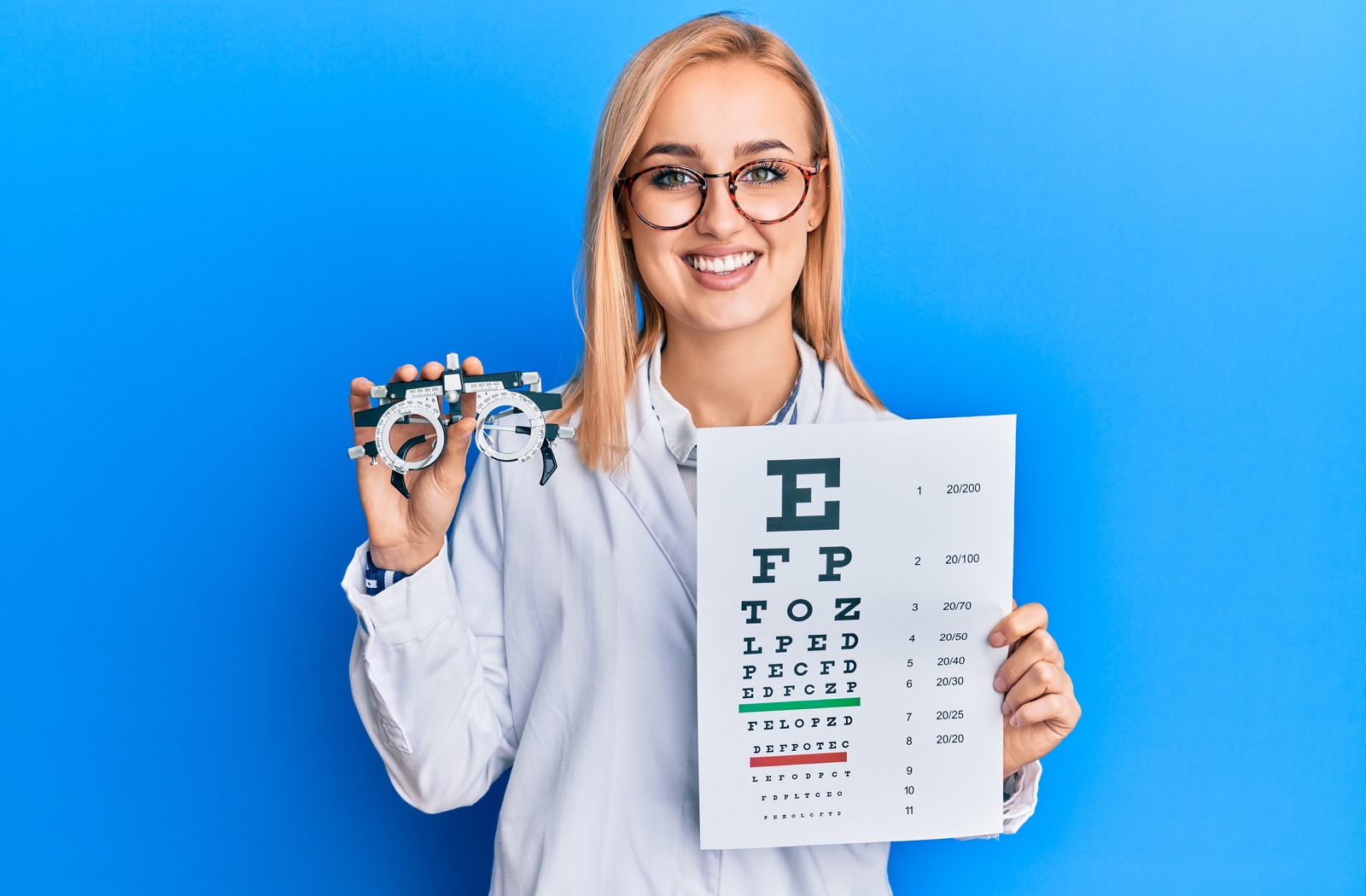Exactly How an Eye Doctor Can Help Avoid Vision Problems in Chino
Discovering the most up to date Technical Developments in Optometry and What They Mean for Optometrists
From the accuracy of Optical Comprehensibility Tomography to the nuanced insights used by AI-driven analysis tools, these developments are setting brand-new standards in client evaluation and therapy. As these advancements penetrate the practice, eye doctors are faced with the difficulty of accepting these devices to boost client results.
Advancements in Diagnostic Devices
Progressing the field of optometry, innovations in diagnostic devices have reinvented the means eye treatment professionals analyze and diagnose aesthetic problems and ocular conditions. The past decade has actually observed significant technological advancements, enabling more comprehensive and accurate examinations. Optical Coherence Tomography (OCT), for example, provides high-resolution cross-sectional images of the retina, allowing for the very early discovery of illness such as glaucoma and age-related macular deterioration. This non-invasive imaging method has become important in contemporary optometric practice.
One more trick innovation is the introduction of advanced corneal topography systems, which map the surface curvature of the cornea with accuracy. These devices are particularly valuable for fitting get in touch with lenses and identifying corneal problems. Electronic retinal imaging has actually changed standard ophthalmoscopy, providing thorough, breathtaking views of the retina that assist in comprehensive visual exams.
The development of wavefront aberrometry has actually likewise been vital, making it possible for the analysis of refractive mistakes with unmatched accuracy (Eye Doctor). This modern technology assists in customizing corrective lenses and boosting medical results for refractive surgical treatments. Collectively, these diagnostic developments equip eye doctors to supply superior patient care, making sure very early intervention and tailored treatment techniques, eventually boosting aesthetic health and wellness results
AI in Patient Monitoring
Structure on the foundation of innovative diagnostic tools, the unification of expert system (AI) in client administration represents a transformative leap for optometry. AI systems are significantly used to improve efficiency, precision, and customization in patient treatment. By assessing substantial quantities of data, AI can determine patterns and predict possible eye problems, allowing optometrists to customize treatments more effectively. This capacity is critical in taking care of chronic eye conditions such as glaucoma and diabetic retinopathy, where early discovery and constant tracking are vital.
Moreover, AI-driven systems promote streamlined client communications and administrative procedures. Automated organizing, virtual appointments, and personalized follow-up strategies not only improve person contentment but likewise optimize time management for experts. These systems can triage individuals based on the urgency of their problems, making certain that those in critical need receive punctual interest.
Furthermore, AI improves decision-making by supplying optometrists with evidence-based referrals and therapy pathways. By incorporating information from electronic health and wellness records, AI devices offer insights that inform medical decisions, reducing the risk of mistakes and enhancing patient results. As AI proceeds to develop, its duty in individual monitoring will likely broaden, reshaping the landscape of optometric care.
Advances in Retinal Imaging
In the realm of optometry, retinal imaging has actually witnessed amazing technical improvements that are enhancing diagnostic abilities and client treatment. Advancements such as Optical Comprehensibility Tomography (OCT) and fundus digital photography have reinvented exactly how optometrists imagine and analyze the retina. OCT, particularly, offers high-resolution, cross-sectional images of the retina, permitting the thorough evaluation of its layers. This capability is vital for very early detection and management of problems like glaucoma, diabetic person retinopathy, and age-related macular degeneration.
Boosted imaging techniques like OCT angiography are more refining diagnostic accuracy. This non-invasive technique maps blood circulation in the retina, using critical understandings into vascular health without the requirement for dye shots. Furthermore, adaptive optics technology is being incorporated right into retinal imaging systems to fix eye aberrations, providing extraordinary picture clarity. Such improvements help with the identification of min retinal adjustments that could symbolize illness development.
Furthermore, innovations in expert system are augmenting retinal imaging by allowing computerized analysis of big datasets. These systems aid eye doctors in identifying patterns a sign of pathology, therefore enhancing diagnostic accuracy and performance. Jointly, these innovations are transforming retinal imaging right into a foundation of contemporary eye treatment, boosting end results and expanding restorative possibilities.
Teleoptometry's Growing Duty
Teleoptometry is increasingly becoming a vital part of eye treatment, driven by developments in digital communication and diagnostic devices. This is especially helpful in underserved and rural locations where accessibility to specialized eye care is frequently limited.
The assimilation of man-made intelligence (AI) more improves teleoptometry, enabling the analysis of aesthetic information and helping in the discovery of ocular problems such as glaucoma and diabetic retinopathy. AI-powered formulas can quickly translate complex imaging information, providing eye doctors with beneficial understandings that reinforce clinical decision-making.
Moreover, teleoptometry sustains continuity of care via seamless assimilation with digital wellness Discover More records (EHRs), permitting optometrists to keep comprehensive individual histories. When consulting with different professionals., this ensures that patients get individualized and consistent care even.
Despite these benefits, difficulties stay, more consisting of ensuring data safety and security and taking care of patient expectations. However, teleoptometry stands for a considerable stride in the direction of even more available, efficient, and patient-centered eye care. As modern technology develops, its duty is positioned to broaden additionally.

Future Fads in Eye Care
A myriad of ingenious patterns is set to improve the future of eye treatment, driven by technical innovations and the advancing requirements of people. One substantial pattern is the combination of expert system (AI) in diagnostics, which guarantees to enhance the precision and efficiency of eye evaluations. AI algorithms can analyze substantial amounts of data from retinal images, possibly detecting problems like diabetic person retinopathy and glaucoma earlier than standard techniques.
Furthermore, personalized medicine is obtaining grip in optometry, with genetic testing educating tailored treatment strategies. This technique aims to maximize client outcomes by customizing interventions to specific genetic profiles. Wearable innovation, such as smart get in touch with lenses, is likewise coming up, supplying real-time monitoring of intraocular pressure or sugar degrees, therefore providing continual understandings into systemic and ocular health and wellness.
The adoption of increased reality (AR) and digital reality (VIRTUAL REALITY) in training and client education and learning is another emerging trend. These technologies offer immersive experiences that can improve understanding and abilities both for clients and eye doctors. As these fads evolve, eye doctors need to stay abreast of technological innovations to supply sophisticated care, making certain better patient results and fulfillment in the vibrant landscape of eye treatment.
Verdict

Collectively, these diagnostic developments encourage eye doctors to deliver remarkable patient treatment, guaranteeing early intervention and customized therapy strategies, ultimately boosting aesthetic health end results.

As these innovations continue to advance, eye doctors need to adjust and include them into method, ultimately enhancing operations efficiency and raising the criterion of eye care supplied to people.